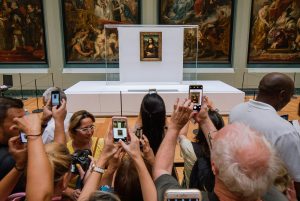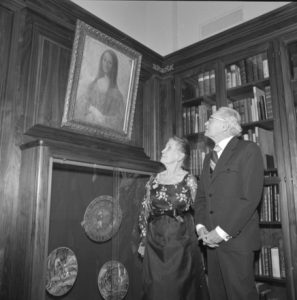This piece was written by George Baker and originally published on the UCLA College of Humanities website.

| February 10, 2025
George Baker is the chair of UCLA’s Department of Art History. A faculty member since 2003, he helped design and lead the department’s program in modern and contemporary art. His latest book, “Lateness and Longing: On the Afterlife of Photography,” was published in 2023 by University of Chicago Press.
In January, French President Emmanuel Macron announced the Louvre Museum would construct a new entrance and a dedicated room for the most famous painting in the world, Leonardo da Vinci’s Mona Lisa.
The projected 1 billion Euro project is being called “New Renaissance,” in a nod to Leonardo’s canvas. Not unlike in other museum modernization projects — including the current demolition and redesign of the main buildings of the Los Angeles County Museum of Art — the Louvre needs to be brought up to contemporary standards. And the Mona Lisa “problem” needs facing.
Converted in the wake of the French Revolution from a former royal palace to the world’s largest art museum, the Louvre initially only allowed public entry for a few hours each weekend. In the 1980s, architect I.M. Pei’s Louvre Pyramid project created an underground entryway for the museum, with the hope of accommodating 4 million visitors per year. Currently, however, the Louvre receives 8 million to 10 million visitors annually. And approximately 80% of those visitors seek to stand with the milling crowds in the Salle des États before the Mona Lisa, a painting that thus stares back at around 24,000 selfie-snapping viewers each and every day.
It was not always like this. In the survey of modern art that I teach, I always introduce the class with one of the most famous scenes in all of French film, from Jean-Luc Godard’s 1964 classic “Bande à part” (“Band of Outsiders”). Seeking to kill time before a heist, Anna Karina’s character and her “gang” run joyously through the relatively empty rooms of the Louvre. “An American had ‘done’ the Louvre in 9 minutes, 45 seconds,” the deadpan narrator (it is Godard) informs us. “They decided to do better.” Museum guards attempt in vain to wave them down, but the gang keeps running with abandon, smiling, laughing.
More recently, filmmaker Agnès Varda restaged this cinematic rush through the Louvre in the wheelchair of her old age, in the 2017 film “Faces Places.” In that case, the museum had to be closed for filming.
It’s hard to imagine now, but the most famous painting in the world was once so neglected that just over a century ago, on a hot summer day in August 1911, the Mona Lisa was stolen from the Louvre. It would not be recovered for over two years.
The Picasso case
In the aftermath of the heist, French authorities focused their investigation on the modernist painter Pablo Picasso and his “gang,” the bande à Picasso. The story goes something like this: Picasso, an expatriate Spaniard, was closest in his gang to another expatriate, the modernist poet Guillaume Apollinaire (born in Rome, but of Polish–Lithuanian and otherwise mysterious descent).
In this cosmopolitan group, Apollinaire had formerly employed a secretary, a Belgian named H.J. Géry-Pieret. But “secretary” was a euphemism: Most histories describe Géry-Pieret instead as a “scoundrel” or a “thief.” Noting the lax security at the Louvre, he had made a specialty of wandering into disused exhibition rooms and pocketing art objects to sell to his employer and his artist friends. In this way, Picasso had come into possession of two Iberian stone sculptures, ancient art from the area in Spain of Picasso’s own origins. Holed away in a cupboard in the artist’s studio, these objects deeply influenced Picasso’s pre-cubist paintings.

But in the wake of the Mona Lisa heist, Géry-Pieret, seeking notoriety, had bragged to a newspaper of his Louvre exploits. In a panic, Picasso and Apollinaire loaded a suitcase with their purloined museum objects and almost dumped them at night into the river Seine. Eventually, the artist and poet would be dragged into court as suspects in the Mona Lisa affair, where Picasso denied knowing his close friend and eventually broke down in a fit of tears. For lack of further evidence, the case was dismissed.
We now know what happened to the Mona Lisa. An Italian employee of the Louvre, Vincenzo Peruggia, had pulled off the heist for “reasons of patriotism,” with the misguided idea of returning the painting to Italy. Like Picasso and Apollinaire, Leonardo was, of course, also an expatriate; he had taken himself to France, which is ultimately why his painting came into the royal collection. But to the extent that nationalism was a motivation for the heist, the story connects across the vast chasm of the years to what has happened to museums and celebrity-art objects in our time.
Of nationalism and borders
Picasso and Apollinaire’s terror in the face of their inquisition was not just about jail time, but about the real fear of being deported. Which is the flip side of what the art world calls repatriation: Some Italians still want the Mona Lisa “returned,” and representatives of some contemporary art foundations in Italy joked in recent weeks that they could put the painting on display during the upcoming Louvre renovations.
But the assertions go both ways: France made waves just last year with the revival of a claim to ownership over one of the Italian capital’s most beloved tourist sites, the Spanish Steps. And the Louvre intends to levy higher ticket prices to see the Mona Lisa on visitors from outside the European Union. Adding to all of this, the painting is now to be cordoned off in its own room — isolated, almost incarcerated, behind a bulletproof casing.
Borders, boundaries, deportation, repatriation, resurgent nationalisms of all sorts: This is the opposite of the world-experience the Mona Lisa continues to give, to those who can find a way to see it.
Art historically, Leonardo’s portrait is the primary example of the technique of sfumato — the softening of all lines and outlines, a hazy vision of non-contours. The Mona Lisa presents a borderless body (fluid in gender as well), a face famously without eyebrows. The crossed hands signal an opening, more an invitation than the experience of closure, like the emphatic parting of their delicate fingers. Behind the figure, the notorious smile opens onto a world entire, with this world echoed by, and ramifying with, the sitter’s body — topography following the directions of arms or the slope of shoulders, sinuous roadways exacerbating the tresses of hair or the curving female bosom, a rolling hill launched from the sash of her drapery, the heavens aligned with her head, flowing waterways carrying along the pathway of the infinite smile.
All boundaries have been called off, and Leonardo seemed to discover that “beauty” is the result.
Our UCLA connections
While we at UCLA are far from the Louvre, I want to remember some things that should underlie any discussion of Leonardo on our campus.
Our campus’s earliest buildings were inspired by the Lombard Romanesque architecture of Milan, where Leonardo spent a significant part of his life. Royce Hall, for example, echoes the Basilica of Sant’Ambrogio. And an endowed chair in Leonardo studies was once housed in the Art Department — where Art History used to live — supported by a singular library devoted to Leonardo, the Elmer Belt Library of Vinciana. Belt was a famed UCLA urologist who performed the earliest sex reassignment surgeries in this country; he hired an expatriate modernist artist, displaced by the Nazis in Germany, to run the institution — the extraordinary Kate Steinitz, a frequent collaborator of Dadaist Kurt Schwitters.

Nearby, in Westwood, the industrialist and collector Armand Hammer acquired the centerpiece of his collection, a Leonardo manuscript called the Codex Leicester, constructing for it a special room in his museum. Now, that room, the Hammer Museum’s so-called “Vault Gallery,” is all that is left from the acquisition, as the Leonardo codex was sold off in the 1990s to Bill Gates. The transaction provided funding for the new museum as UCLA absorbed it into the university.
Around the same time, the Leonardo Chair was discontinued, and the Belt Library was disassembled and moved into storage.
These losses echoed even earlier ones: In 1938, UCLA received a major donation of old master paintings, the Willits J. Hole Collection, that was hung initially in the UCLA Library. At the center of the donation was a variation on Leonardo’s “The Virgin and Child with Saint Anne,” one of the Louvre’s other masterpieces, the painting on which Sigmund Freud based his famous analysis of the artist. Now believed to have been painted by Leonardo’s favorite assistant (and lover) Andrea Salaì, the canvas is in better shape than the “original,” its colors still deeply vibrant. UCLA long ago loaned it to LACMA; more recently, it has been hanging at the Getty.
All of this brings our Leonardo story back home. Perhaps it is time to reclaim these histories, institutions and artworks for the campus and its students — to create our own room for Leonardo, rather than the spectacular cell coming soon to the Louvre.
